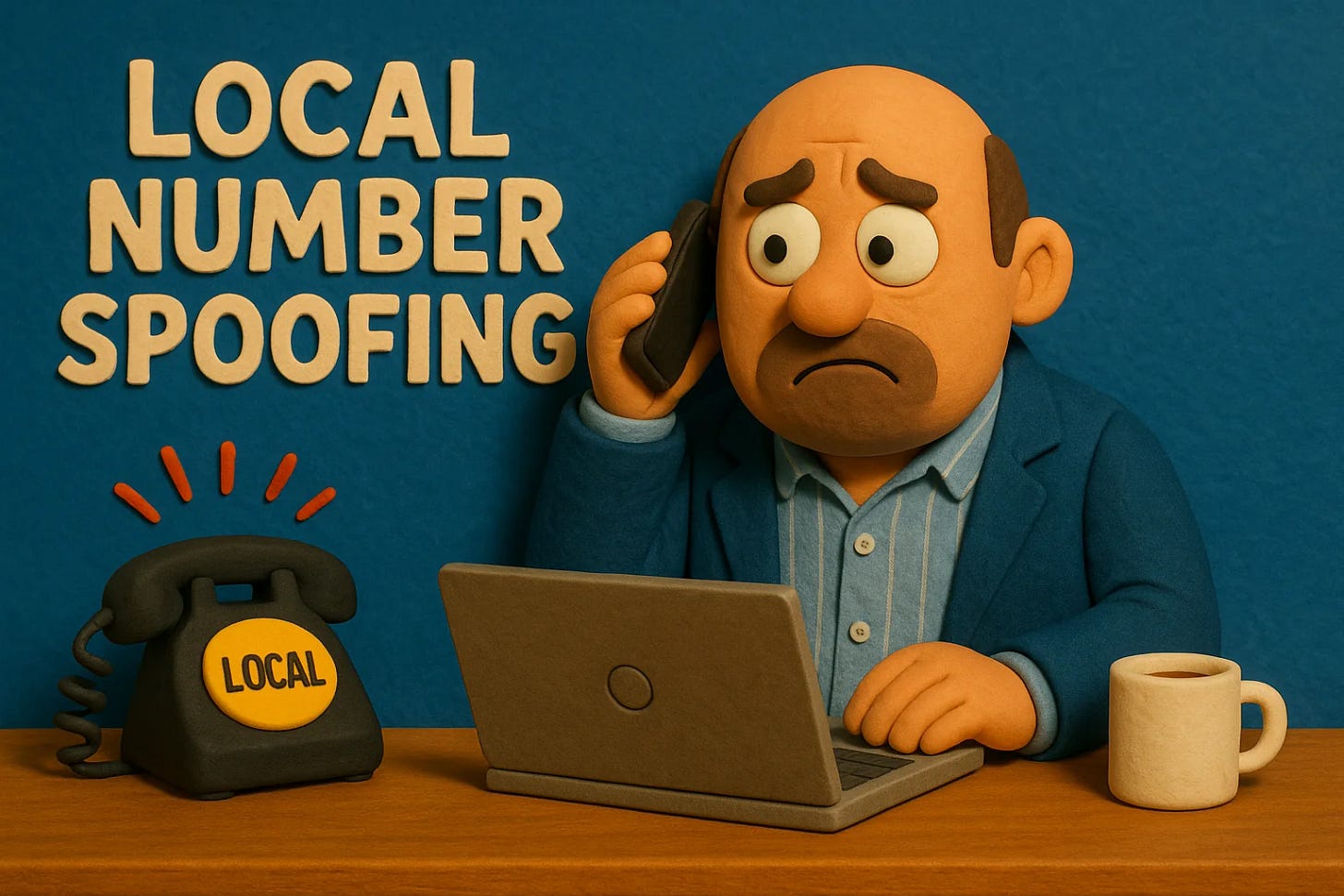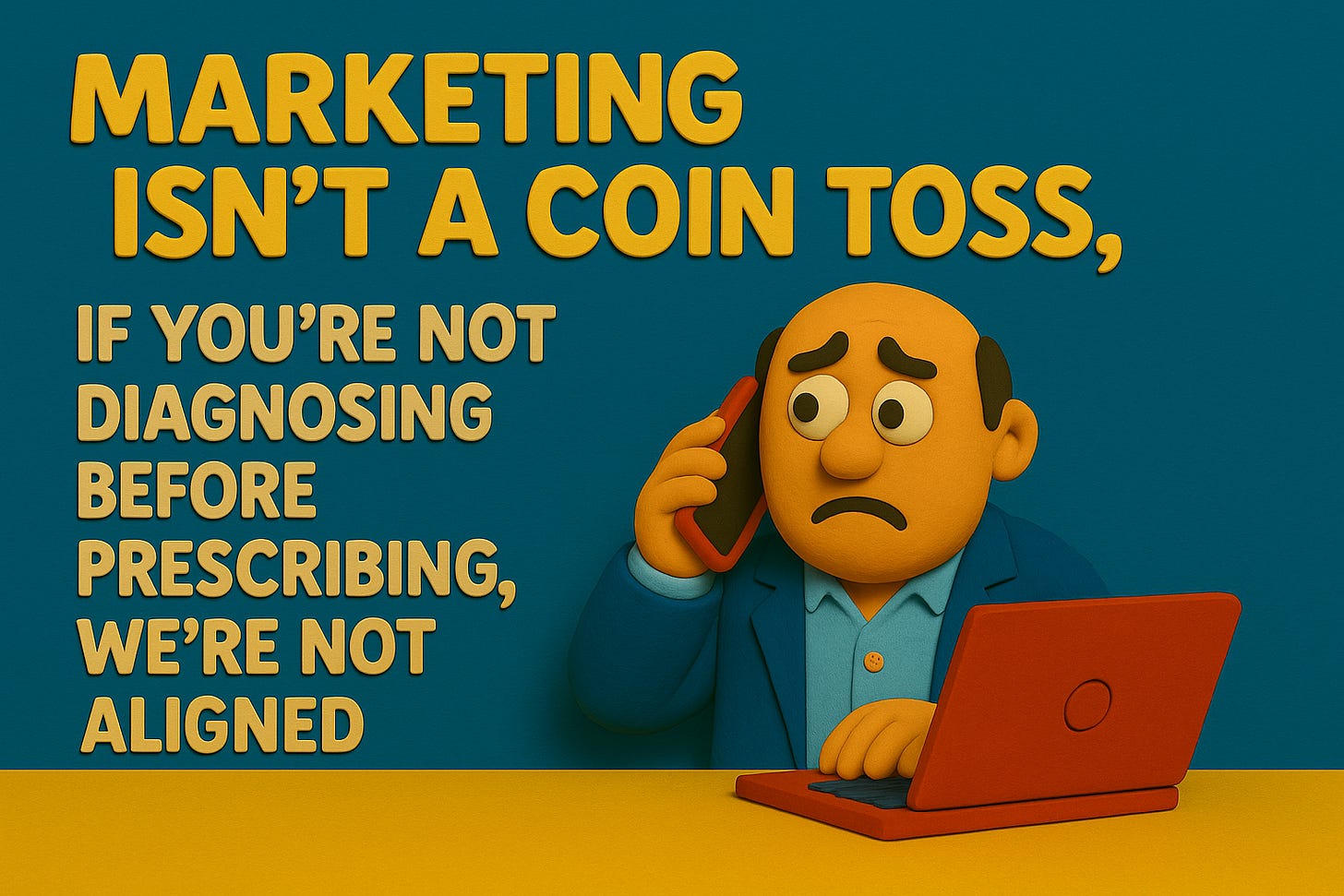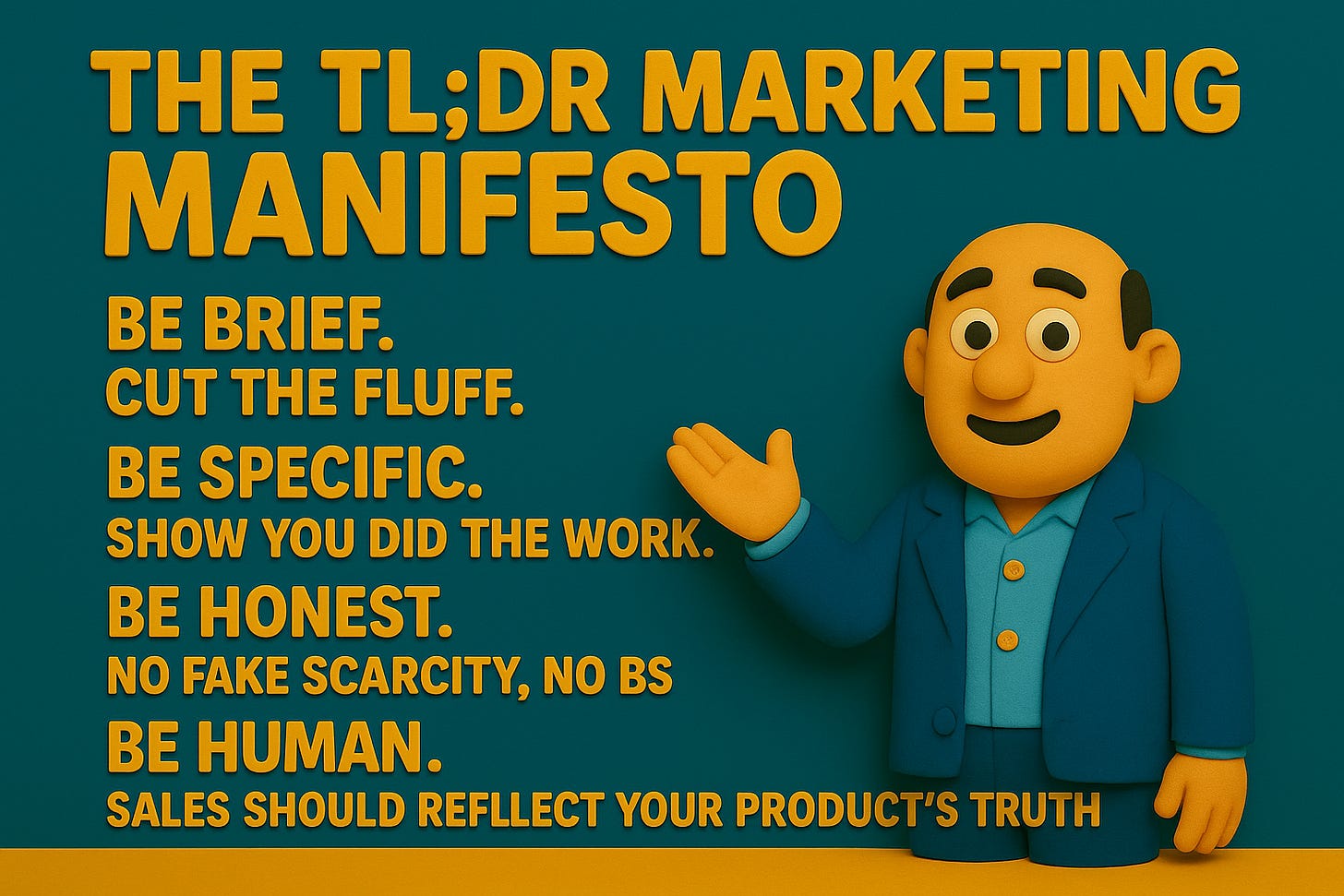Over the past month, I decided to stop hitting "delete" on cold emails and start replying to them. All of them.
The fake-flattering book lovers.
The “I saw your profile…” messages that could’ve been sent to a houseplant.
The LinkedIn DMs with emojis and desperation.
The spoofed phone calls used my area code to bait a pickup.
Most people ignore this junk. I didn’t. I answered. I poked. I asked hard questions. I responded like a human being who knows the game—and refuses to play along quietly.
What I found was worse than I expected.
Behind every message was a junior rep chasing a quota, blindly following a script written by someone who thinks “persistence” is the same thing as pressure. Automation was doing the heavy lifting, personalization was fake, and accountability was lacking. Nonexistent.
But here’s the most alarming part: they didn’t think they were doing anything wrong.
They were “just following sales best practices.” They genuinely believed that link-heavy templates, misdirection, and flattery disguised as curiosity were valid marketing tactics. And that is precisely how you know the system is broken.
Let’s break it down, offense by offense, principle by principle, and then let’s talk about how to fix it.
Offense 1: Local Number Spoofing
A call comes in. Same area code as mine. Seems familiar.
Pick it up: silence… and then someone selling something I never asked for.
This tactic preys on trust. It’s not clever—it’s manipulative.
Violations:
MAC Principle: Transparency – If you lie to get in the door, everything after that is tainted.
Center for Humane Tech: Respect for Attention – Faking familiarity to hijack someone’s focus is attention theft, not outreach.
Offense 2: “Personalized” Automation That Isn’t
“I saw your profile and thought I’d reach out.”
“I love your book.”
“You came across my radar.”
Dozens of emails and messages, all with the same telltale signs of automation: vague compliments, templated language, and calendar links they’re hoping you’ll click without asking questions.
So I asked questions.
“Which part of my book did you like?”
“What makes my work a fit?”
Silence. Or worse, they admit it’s all scripted.
One person even said:
“I’m just following our company’s best practices… or so-called scripts lol.”
Yeah. That’s not a strategy. That’s plausible deniability in Slack-channel form.
Violations:
MAC Principle: Authenticity – If you say something’s personal, make sure it is.
MAC Principle: Truth-Seeking – Don’t pretend to know your prospect. Learn something about them first.
Center for Humane Tech: Honest Communication – Flattery isn’t honesty. It's misdirection when there's no substance behind it.
Offense 3: The Link-Littered Email
One message came with 14 hyperlinks. Fourteen.
It felt less like an email and more like a digital escape room. Demos, case studies, webinars, articles, videos… pick your poison.
I replied:
“If your product streamlines anything, maybe start with the emails.”
Their follow-up? Another email. More links.
Violations:
MAC Principle: Continuous Improvement – Feedback was ignored. Process didn’t change.
MAC Principle: Cognitive Bandwidth – People don’t have time for your hyperlink buffet. Get to the point.
Center for Humane Tech: Value Before Engagement – Volume isn’t value. It’s noise.
Offense 4: The Mystery Job Offer
I was pitched a "leadership role" at a company they couldn’t name.
They dangled 100 patents, revolutionary impact, and a chance to “talk with the CTO who’s very interested in you.”
But here’s what they didn’t include:
What the company does
What the role entails
Why they think I’m a fit
I asked for details. They sent a Zoom link.
Violations:
MAC Principle: Accountability – If you can’t explain the offer, don’t pitch it.
MAC Principle: Urgency – Urgency without clarity is just manufactured pressure.
Center for Humane Tech: Empowered Choice – You can’t say “this is perfect for you” if you can’t even say what “this” is.
Offense 5: Pay-Only-If-It-Works “Marketing”
Another rep offered to build email campaigns “for free”—only charging if they deliver results.
Sounds generous… until you realize they didn’t ask a single question about the business, the goals, or the audience.
I replied:
“Marketing isn’t a coin toss. If you’re not diagnosing before prescribing, we’re not aligned.”
They said thanks… and pitched the same thing again.
Violations:
MAC Principle: Truth-Seeking – Strategy isn’t “let’s guess until it works.”
Center for Humane Tech: Respect for Human Agency – Don’t dress up gambling as partnership.
Final Word: This Isn’t Just Annoying. It’s Broken.
Each of these examples wasn’t just a nuisance—they were symptoms of a marketing culture that values activity over accuracy, quantity over quality, and reach over respect.
The reps? Mostly junior. The playbooks? Old. The ethics? Nonexistent.
But this is what happens when we stop training marketers to think and start training them to automate.
It’s not that they’re bad people.
It’s that they’ve been taught that this is how you do it.
Here’s the MAC reality:
You are responsible for the system you participate in—whether you wrote the script or not.
If your tactics manipulate, mislead, or waste time, you’re not selling.
You’re churning attention into apathy.
A Better Way: Ethical Outreach That Doesn’t Treat People Like Clickbait
You want leads. You want clients. You want conversions.
Cool. You can get all of that without pretending to be their neighbor, their fan, or their dentist.
Here’s how:
1. Lead With a Real Problem—Not a Product
Stop saying “we’d love to tell you more.” Start by proving you understand something that actually matters to them. Research before outreach.
Bad:
“We help businesses like yours scale.”
Better:
“I saw your recent post about shifting from enterprise to SMB clients. Most marketers I work with struggle with audience clarity during that pivot—so I thought this might be relevant.”
MAC Principle: Truth-Seeking
2. Treat Outreach Like a Real Conversation, Not a Funnel Trigger
Imagine you’re meeting someone at a conference. Would you launch into your services, drop a brochure, and walk away? Of course not. So don’t do it online.
Bad:
12-paragraph pitch with 5 links and a Calendly invite.
Better:
One crisp message with a clear ask and no links until invited:
“Happy to share a simple one-pager if you’re curious—no pressure. Want me to send it?”
MAC Principle: Transparency
3. Make It Obvious You Did the Homework
Not fake personalization. Real specificity. Reference their work. Their goals. Their actual business. Otherwise, don’t send the message.
Bad:
“Loved your recent blog post!” (They didn’t write one.)
Better:
“In your post about marketing ethics, you mentioned being tired of ‘manipulative outreach.’ Honestly? Same. That’s why I’m trying a different approach.”
MAC Principle: Authenticity
4. Drop the Manipulation—Respect the Opt-Out
If someone says no, believe them. If they ghost you, let them. And don’t pretend a previous click or form from three years ago is consent for eternal follow-up.
Bad:
“Just checking in again. Have you seen my last five emails?”
Better:
“No worries if this isn’t a fit. Thanks for taking a look.”
MAC Principle: Accountability
5. Align the Sales Process With the Product’s Value
This is the big one. If your product is meant to make life easier, your sales process should feel… easy. If your product is built on trust, your outreach should be trustworthy as well. If your value prop is clarity, then don’t confuse people with your pitch.
Ask yourself:
Does the way I’m selling reflect the value I claim to deliver?
Because if it doesn’t, you’re not building demand—you’re faking urgency and praying for ignorance.
The TL;DR Marketing Manifesto
Be brief. Cut the fluff.
Be specific. Show you did the work.
Be honest. No fake scarcity, no BS.
Be human. Real voice > script.
Be aligned. Sales should reflect your product’s truth.
You want to win in this market? Stop being louder.
Start being better.
And if you're not sure what "better" looks like, MAC is here. Clipboard in one hand. Bullshit detector in the other.










